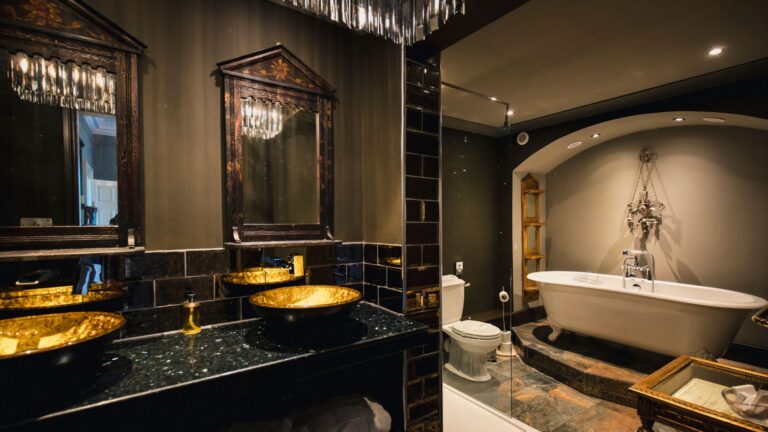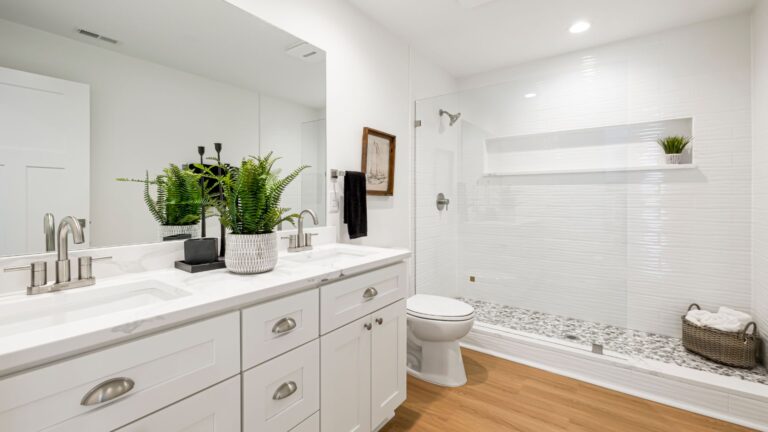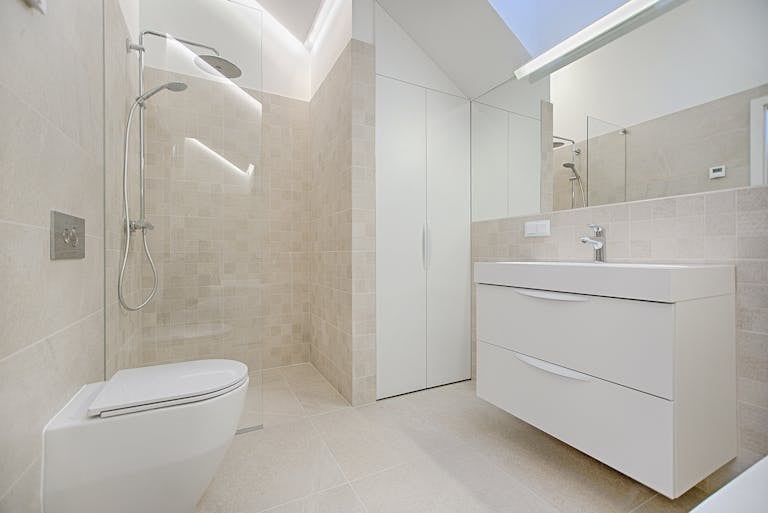Window vs Mechanical Ventilation: Which is the Better Choice for Your Home?
Proper ventilation is essential for maintaining healthy indoor air quality and ensuring comfort in your home. Whether you’re trying to reduce moisture, eliminate odors, or simply improve airflow, choosing the right ventilation system can make a big difference.
Two of the most common ventilation methods are window ventilation (also known as natural or passive ventilation) and mechanical ventilation (such as exhaust fans, heat recovery ventilators (HRV), or energy recovery ventilators (ERV)). Each has its own set of advantages and drawbacks, depending on your home’s needs and the climate in which you live.
In this article, we’ll compare the pros and cons of Window vs Mechanical Ventilation, helping you decide which system is the best fit for your home, lifestyle, and energy efficiency goals.
Why Ventilation Matters in Your Home
Ventilation plays a crucial role in ensuring that the air in your home remains fresh and breathable. It helps to regulate temperature, humidity, and air quality, creating a comfortable and healthy living environment. Without proper ventilation, moisture can build up, leading to mold growth, and poor air circulation can make your home feel stuffy and uncomfortable.
The Role of Ventilation in Improving Indoor Air Quality
Good ventilation is key to removing pollutants, allergens, and excess moisture from indoor air. Without proper airflow, indoor air quality can suffer, leading to respiratory issues and exacerbating allergies. Ventilation helps by bringing in fresh air from the outside and expelling stale air, ensuring that your home remains healthy and comfortable.
How Ventilation Affects Comfort, Health, and Energy Efficiency
Proper ventilation can help maintain comfortable indoor temperatures and humidity levels, making your home feel more comfortable. Additionally, it can help reduce the risk of condensation, which leads to mold and mildew growth. From an energy efficiency standpoint, mechanical systems like HRVs and ERVs can help regulate temperature and humidity while reducing the load on your HVAC system, saving energy and lowering heating and cooling costs.
The Impact of Poor Ventilation on Your Home
When ventilation is inadequate, moisture, odors, and contaminants accumulate inside your home, creating an environment that promotes mold growth, stale air, and unpleasant odors. Over time, poor ventilation can lead to more serious issues, such as damage to the home’s structure, increased energy costs, and health problems for the inhabitants. Therefore, it’s essential to ensure proper ventilation to prevent these issues and improve your home’s overall air quality.
What is Window Ventilation?
Window ventilation, also known as natural or passive ventilation, refers to the process of allowing fresh air into your home through open windows, doors, or vents. This method relies on natural forces such as wind and temperature differences to move air through the space.
How Natural Airflow Works Through Open Windows
When you open a window, the air pressure difference between the inside and outside of the house creates airflow. Wind and temperature variations can cause air to flow through open windows, helping to remove stale air and bring in fresh air. This process works best when there’s a good breeze or temperature difference between the indoors and outdoors.
In homes with sufficient airflow and outdoor access, window ventilation can be an effective way to improve indoor air quality without the need for mechanical systems.
Pros and Cons of Using Windows for Ventilation
Pros:
- Low Cost: One of the biggest advantages of window ventilation is that it’s free! You don’t need to purchase or install any equipment, and you can open windows at your convenience.
- Energy-Efficient: Since it doesn’t require electricity, window ventilation is one of the most energy-efficient options available.
- Fresh Air: Window ventilation allows fresh outdoor air into the home, which can improve the overall air quality and remove any musty or stagnant smells.
Cons:
- Weather Dependent: Window ventilation works best in mild weather conditions. In extreme heat, cold, or rainy weather, it may not be an option, limiting its effectiveness.
- Limited Airflow: Relying on natural airflow alone may not provide enough ventilation, especially in larger or airtight homes. It can also be difficult to achieve adequate airflow in areas like bathrooms and kitchens.
- Security Concerns: Opening windows may raise concerns about home security, especially if the windows are left open while you’re away or at night.
What is Mechanical Ventilation?
Mechanical ventilation systems are designed to force air in and out of your home using electrically powered fans. These systems can be used to control the flow of fresh air and exhaust stale air, improving indoor air quality and comfort. There are various types of mechanical ventilation systems, including exhaust fans, HRVs, and ERVs.
Different Types of Mechanical Ventilation (Exhaust Fans, HRVs, ERVs)
- Exhaust Fans: These are the most basic type of mechanical ventilation, often used in bathrooms, kitchens, and laundry rooms to remove moisture, odors, and contaminants. They pull air out of the room and expel it outside.
- Heat Recovery Ventilators (HRVs): HRVs exchange indoor air with fresh outdoor air while recovering the heat from the indoor air. This makes them highly efficient in both cold and warm climates, as they help maintain the indoor temperature while improving ventilation.
- Energy Recovery Ventilators (ERVs): Similar to HRVs, ERVs exchange heat between incoming and outgoing air, but they also manage humidity. ERVs are particularly useful in areas with high humidity levels, as they help prevent excess moisture buildup indoors.
Pros and Cons of Using Mechanical Ventilation Systems
Pros:
- Consistent Airflow: Mechanical ventilation systems provide continuous and consistent airflow, ensuring that your home is always ventilated, even during extreme weather conditions.
- Air Quality Control: With mechanical systems, you have more control over the air quality and can filter outdoor air, improving the overall health of your indoor environment.
- Energy Efficiency: HRVs and ERVs recover heat or energy, making them highly efficient and cost-effective in terms of energy consumption.
- Suitable for Airtight Homes: In homes with limited natural airflow (such as newer, airtight homes), mechanical ventilation systems are essential for maintaining good air quality.
Cons:
- Installation Costs: Mechanical ventilation systems can be expensive to install, especially if they require ductwork or extensive modifications to the home.
- Ongoing Energy Consumption: While systems like HRVs and ERVs are energy-efficient, they still consume electricity to operate, which can lead to higher energy bills compared to natural ventilation.
- Maintenance: Mechanical ventilation systems require regular maintenance, such as cleaning filters and ensuring the fans are working properly, which can incur additional costs over time.
Window Ventilation vs. Mechanical Ventilation: Key Differences
While both window ventilation and mechanical ventilation provide essential airflow and help improve indoor air quality, they have distinct advantages and limitations depending on factors like climate, room size, and the level of ventilation needed. Here’s a breakdown of the key differences between the two systems:
Comparing Natural vs. Forced Airflow
- Window Ventilation (Natural Airflow): Window ventilation relies on natural forces such as wind and temperature differences to create airflow. It’s ideal for mild climates where there’s a good breeze and temperature variation. However, it may not be reliable in extreme weather conditions or in homes that are tightly sealed for energy efficiency.
- Mechanical Ventilation (Forced Airflow): Mechanical ventilation, on the other hand, uses fans to actively move air in and out of your home. It provides consistent airflow, regardless of the weather outside. Mechanical systems are more reliable and can be designed to work efficiently in airtight homes or in areas with extreme weather.
Cost Differences (Installation, Maintenance, and Operation)
- Window Ventilation: The primary advantage of window ventilation is its low cost. There’s no need for expensive equipment or installation; simply open your windows and doors. The ongoing operational cost is zero, as no electricity is required. However, you may need to pay for additional window ventilation fixtures like vents or screens if you prefer a more controlled airflow.
- Mechanical Ventilation: The initial cost of installing a mechanical ventilation system can be significant. Systems like HRVs and ERVs require ductwork and professional installation, which can add to the upfront expense. Operating mechanical ventilation systems also involves energy consumption, which will increase your electricity bill. However, HRVs and ERVs are energy-efficient systems that can offset some of these costs by recovering heat and reducing the load on your HVAC system.
Effectiveness in Different Climate Conditions
- Window Ventilation: Window ventilation works best in moderate climates where temperatures are mild and there’s a breeze. In warm or humid climates, it may not be enough to manage the heat or humidity. In cold climates, opening windows can lead to heat loss, making it less effective for maintaining comfort and energy efficiency.
- Mechanical Ventilation: Mechanical ventilation systems, such as HRVs and ERVs, are effective in both cold and hot climates. HRVs are particularly useful in cold climates because they recover heat from outgoing air and transfer it to incoming fresh air. ERVs are ideal in humid climates because they help regulate both temperature and humidity levels, keeping your indoor air comfortable.
Benefits of Window Ventilation
Window ventilation is a simple and energy-efficient method of improving indoor air quality. There are several advantages to using windows for ventilation, especially in mild climates and well-ventilated homes.
Energy Savings and Natural Airflow
The most obvious benefit of window ventilation is the energy savings. Since it doesn’t require electricity, it’s one of the most cost-effective ways to ventilate your home. Window ventilation relies on natural airflow, which is completely free of charge, making it an excellent option for homeowners looking to reduce energy consumption.
Fresh Air and Connection to the Outdoors
Opening windows allows you to bring in fresh outdoor air and maintain a natural connection to your environment. It’s a great way to ensure that your home stays well-ventilated while also creating a more comfortable and relaxing atmosphere.
How Window Ventilation Works Best in Mild Climates
Window ventilation is most effective in climates where temperatures remain moderate throughout the year. In these environments, natural ventilation can keep your home comfortable without the need for mechanical systems. The breeze and natural temperature fluctuations help facilitate airflow, making window ventilation an easy and effective solution.
Benefits of Mechanical Ventilation
While window ventilation works in certain situations, mechanical ventilation systems provide greater control and are often the better choice in homes with specific ventilation needs or in regions with extreme weather conditions.
Consistent Airflow and Air Quality Control
Mechanical ventilation systems offer consistent, controlled airflow, making them ideal for airtight homes or spaces where natural airflow is insufficient. These systems ensure that air is constantly exchanged, which helps to maintain indoor air quality by removing moisture, allergens, and pollutants.
Effective for Airtight Homes and Extreme Weather Conditions
Mechanical ventilation is particularly useful in airtight homes, which are designed to conserve energy by limiting air leaks. In such homes, relying on window ventilation alone may not provide enough airflow, leading to poor air quality. Mechanical systems like HRVs and ERVs ensure that air is exchanged without compromising the home’s energy efficiency.
In extreme weather conditions, mechanical ventilation systems can operate year-round, providing the necessary airflow even when it’s too hot, cold, or rainy to open windows.
Energy Recovery Systems (HRV/ERV) and Efficiency
HRVs and ERVs are the most energy-efficient mechanical ventilation options available. These systems work by recovering energy from the outgoing air and using it to precondition incoming air. This process minimizes the need for heating or cooling, reducing overall energy consumption and improving the home’s energy efficiency.
- HRVs are ideal for cold climates where heat recovery is essential to maintain indoor temperature.
- ERVs are great for humid climates as they help regulate both temperature and humidity levels, reducing moisture buildup inside the home.
Which Ventilation System is Best for Your Home?
Deciding between window and mechanical ventilation depends on several factors, including the size of your home, the climate in which you live, and your specific ventilation needs. Here’s a guide to help you determine which system is right for you:
How to Decide Based on Home Size, Location, and Climate
- Small Homes in Moderate Climates: Window ventilation is likely to be sufficient for small homes in mild climates. These homes can benefit from natural airflow through open windows, which helps maintain fresh air without the need for mechanical systems.
- Larger Homes or Airtight Homes: For larger homes or homes that are tightly sealed for energy efficiency, mechanical ventilation is a must. Mechanical systems like HRVs or ERVs ensure that the home remains well-ventilated, even in the absence of natural airflow.
- Cold Climates: Homes in cold climates will benefit from mechanical ventilation systems like HRVs, which can recover heat from the outgoing air and reduce the need for additional heating.
- Hot or Humid Climates: For hot or humid areas, ERVs can help maintain indoor comfort by regulating both temperature and humidity levels, while window ventilation may not be enough to control moisture buildup.
Combining Both Systems for Optimal Ventilation
In some cases, combining window ventilation with mechanical ventilation can provide the best of both worlds. A hybrid approach can help maximize airflow, optimize energy efficiency, and improve indoor air quality. Here’s how you can combine both systems effectively:
How Window and Mechanical Ventilation Can Complement Each Other
- Natural Ventilation When Possible: During mild weather, you can rely on window ventilation to bring in fresh air and let natural airflow do the work. This reduces the need for mechanical systems and saves on energy costs.
- Mechanical Systems for Consistency: When weather conditions are not favorable for window ventilation (in extreme heat or cold), you can rely on mechanical ventilation to maintain consistent airflow. Mechanical systems can work 24/7, ensuring that your home is always ventilated, regardless of external conditions.
- Nighttime Cooling: In some climates, windows can be opened at night to allow cool outdoor air to flow into the house. This is especially useful during warm summer months. During the day, when temperatures rise, mechanical systems can maintain ventilation while keeping the indoor environment comfortable.
- Boosting Airflow in Key Areas: For homes that have limited airflow in certain areas, like basements or bathrooms, adding mechanical ventilation (such as an exhaust fan) can help remove stale air and moisture that window ventilation alone may not reach.
Hybrid Systems for Energy Efficiency
Many modern ventilation systems allow for a combination of both window and mechanical ventilation. For example, some systems include automated window ventilators that open and close based on humidity levels, working together with a mechanical system like an HRV or ERV to manage air quality more efficiently. These systems adjust ventilation according to real-time indoor and outdoor conditions, ensuring maximum comfort and energy savings.
Energy Efficiency and Cost Considerations
When choosing between window and mechanical ventilation, it’s essential to consider both energy efficiency and cost over the long term. Here’s a comparison of the energy use and expenses associated with both systems:
Energy Use and Operational Costs for Both Systems
- Window Ventilation: Since window ventilation doesn’t require electricity, it’s free to operate. The cost comes only when purchasing window vents or other accessories, which are relatively inexpensive. However, in extreme weather, relying solely on open windows can lead to heat loss or gain, increasing your need for heating or cooling.
- Mechanical Ventilation: Mechanical systems, especially HRVs and ERVs, are more energy-efficient than traditional HVAC systems. However, they do consume electricity to operate. HRVs and ERVs are particularly efficient at maintaining indoor temperature and air quality while minimizing energy loss. The operational costs for mechanical systems are typically lower than other forms of active heating or cooling, but there will still be some electricity costs involved.
Upfront and Maintenance Costs
- Window Ventilation: The upfront cost for window ventilation is minimal—just the cost of windows and vents, which can range from $50 to a few hundred dollars depending on the type and number of windows. There are no major maintenance costs associated with window ventilation, aside from cleaning and upkeep of the windows.
- Mechanical Ventilation: The initial installation cost of mechanical systems can vary widely, depending on the type of system. Simple exhaust fans may cost $100–$300, while HRVs and ERVs can cost between $1,000 and $3,000, including installation. Maintenance costs include cleaning filters and checking the system annually to ensure it is working efficiently. While the initial investment is higher, the long-term energy savings and air quality benefits often justify the cost.
Which System is More Sustainable?
Both window and mechanical ventilation can be considered sustainable, but in different ways:
- Window Ventilation is inherently sustainable because it requires no electricity and relies on natural forces to provide airflow.
- Mechanical Ventilation systems, especially HRVs and ERVs, are also sustainable due to their energy-efficient design, which helps reduce overall energy consumption while maintaining optimal indoor air quality.

Conclusion: Window vs. Mechanical Ventilation
The debate between window and mechanical ventilation ultimately depends on your home’s size, climate, and specific ventilation needs. If you live in a mild climate and have a well-ventilated home, window ventilation may be sufficient and energy-efficient. However, if you live in an airtight home, have extreme weather conditions, or require more consistent airflow, mechanical ventilation is the better option.
In many cases, a combination of both systems can provide the best results. By using natural airflow when possible and relying on mechanical systems for consistency, you can achieve optimal air quality while maintaining energy efficiency.
Contact Us for a Free Consultation
If you’re unsure which ventilation system is right for your home or need help installing a mechanical ventilation system, we’re here to help. Contact us today for a free consultation, and let’s discuss the best ventilation options for your needs.







